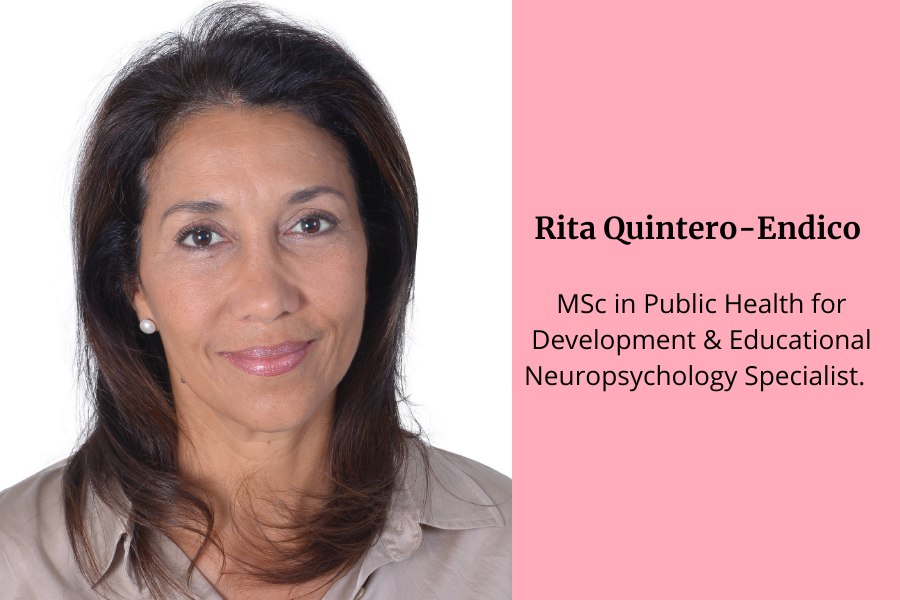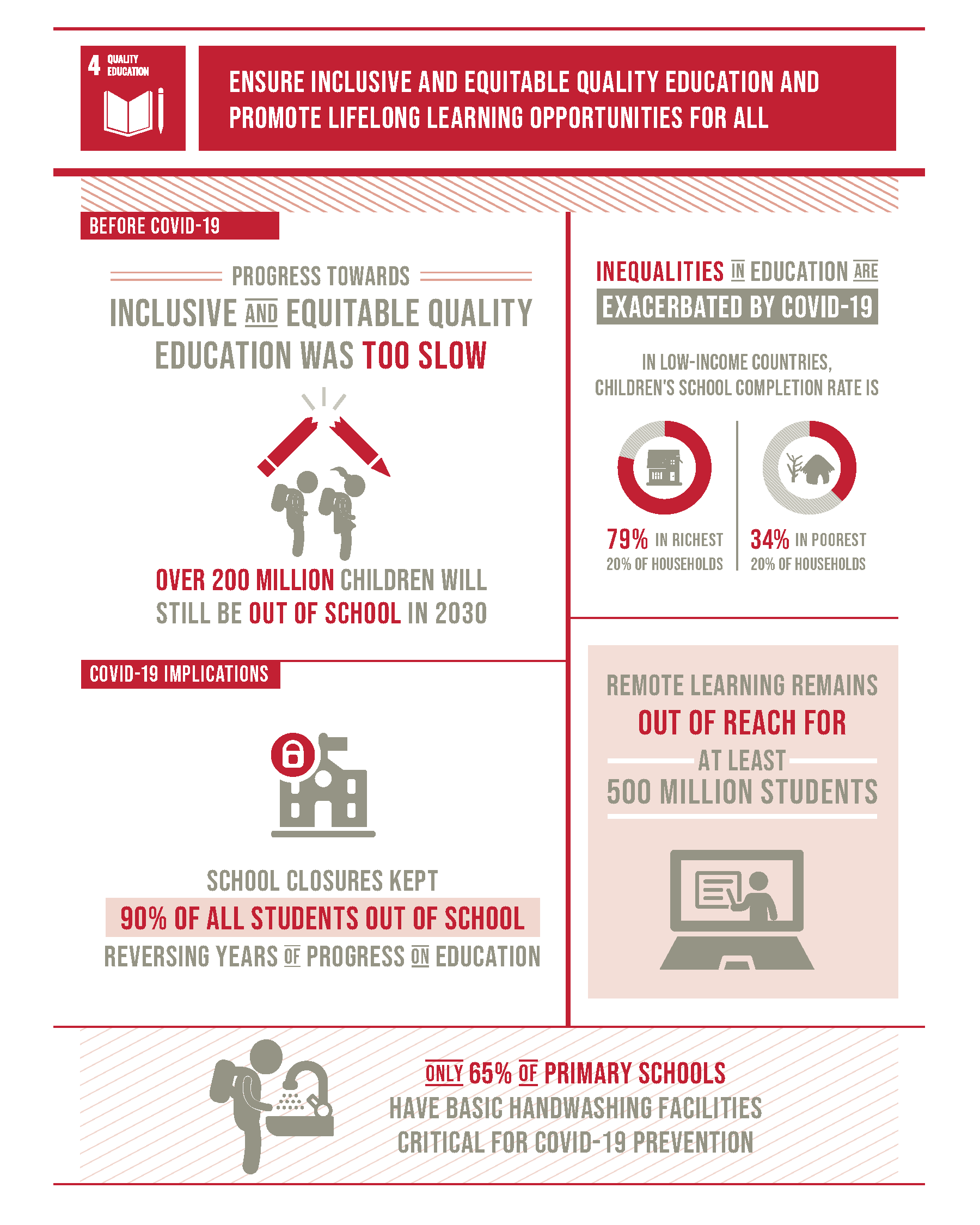By Rita Quintero-Endico, MSc in Public Health for Development and Educational Neuropsychology specialist.

An education-pandemic
Even before the COVID-19, academic achievement was a difficult global challenge. The UN’s Sustainable Development Goal 4 aims to ensure inclusive and equitable quality education and promote lifelong learning opportunities for all.
But we’re not anywhere near on target to meet that goal. Before COVID-19, more than 200 million children would still be out of school by 2030. The story since then is even more bleak:
- School closures have kept 90% of all students out of school.
- Remote learning remains out of reach for at least 500 million students.
- Inequalities have been exacerbated by COVID-19 with school completion rates much higher in the richest households than the poorest households.
But it’s so much more than a missing education. The years spent in school and attaining academic achievements help prevent poverty, promote gender equality, provide nutrition, and reduce inequalities, which all ties into good health and wellbeing.
Embedding an existing solution: neuro sensory-motor programmes
The field of Educational Neuropsychology has solutions that may help improve educational disparities and give more children a better chance of long-lasting success.
Thanks to emerging research with neuroimaging, experts in the field use methods for neuro-sensory-motor development of pre-reading skills in primary schools and secondary schools too.
What does it involve?
A protocol of physical exercises (gross motor basic movements like crawling, dragging; vestibular development exercises like jumping, sliding; visual exercises like saccadic movements, convergence, and others) with the required frequencies and durations, are set to stimulate specialized brain areas and processes. To delve into more depth;
- Executive functions in the brain are responsible for many cognitive skills such as controlling and planning voluntary movement. These are acquired through body exercises. If a child doesn’t exercise sufficiently to stimulate this part of the brain, their movements will be involuntary. This may lead to a diagnostic of hyperactivity.
- Integration of the sensory system is processed in the brain, but attained through body exercises and proper care of the senses (vision, audition, vestibular balance etc).
- Laterality is the dominance of one side of brain, hand, foot, vision, audition; acquired through development (body exercises) and optimizes school learning.
The acquisition and well-functioning of these processes and other pre-reading skills make ‘learning to read’, ‘understanding reading’, mathematics, and other school tasks easier. If these processes are not adequately attained or if not functioning well, the brain may interpret letters and numbers as distorted, (even if the child doesn´t qualify for the criteria of dyslexia or other disorders). This in turn may affect academic achievement.
Long lasting benefits that ensure children can thrive
These programmes have a range of benefits for children.
Firstly, they help to offset the effect of a sedentary lifestyle on obesity and cognition. A study by Milne et al. (2018) found good evidence in the relationship between motor proficiency and pre-reading skills (correlation coefficient r = .664., p = .04 to r = .716, p = .04). Another study by Dodick et al. (2017) found that visual exercises (saccadic movements) and reading were associated with improvement in reading fluency (6.2% vs 3.6% , P = .0277) and in reading comprehension (7.5% vs 1.5%, P = .0002). The association was even stronger among the high-needs students (fluency P < .001; comprehension, P < .001). This is especially important right now, as trends are emerging around lack of access to parks, excess use of screens, and COVID lock-downs.
Secondly, these routines can help to reduce hyperactivity associated with lack of movement or development.
Finally, and perhaps most importantly, these programmes help children over six years old to develop, sustain, and optimise neurodevelopmental skills. It’s beneficial for all children but especially for those with late development.
How can we use this?
These routines can be integrated into academic achievement and childhood obesity programmes in communities and school settings. Teachers can be trained to execute the exercises in the classrooms, for the benefit of all the students. Education is multidimensional and addressing learning skills with this neuropsychological perspective can help children to recover and improve academic performance.
If you’d like to learn more about this, or would like to collaborate to embed it in your work, you can contact Rita Quintero-Endico at Rita.Quintero1@alumni.lshtm.ac.uk or ritaquintero@wanadoo.fr.
Our postgraduate taught courses provide health practitioners, clinicians, policy-makers, scientists and recent graduates with a world-class qualification in public and global health.
If you are coming to LSHTM to study a distance learning programme (PG Cert, PG Dip, MSc or individual modules) starting in 2024, you may be eligible for a 5% discount on your tuition fees.
These fee reduction schemes are available for a limited time only.

